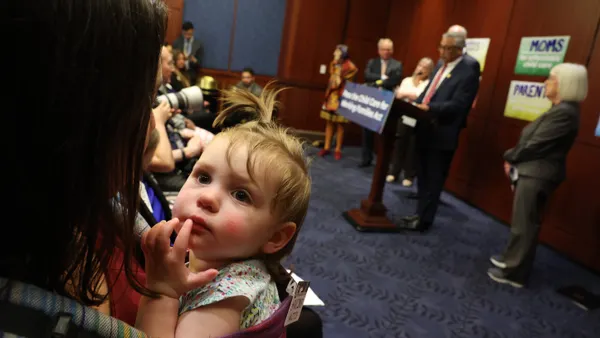The primary focus in 2017 will, as usual, be placed on creating a workplace environment that is legally compliant yet flexible; thoroughly professional yet warmly authentic. The modern workplace, in the eyes of many industry leaders, should cater to the needs of various demographics, genders, skill levels and age groups.
One area in which these beliefs have been heavily emphasized is employee benefits. All workers expect their jobs to help them in ways beyond simple compensation, whether this takes the form of health insurance, parental leave or a fitness club.
So what should HR departments expect to change (or stay the same) for benefits in 2017? To find out, we asked observers what they see on the horizon for employee benefits packages, and how emerging trends in four areas will shape these offerings over the next year.
The Affordable Care Act
After the conclusion of the 2016 presidential election, political media discussion immediately shifted toward what kind of administration President-elect Donald Trump would formulate in his first 100 days. Of particular interest was his pledge to introduce sweeping changes to the Affordable Care Act.
Most in the industry agree that a full repeal is unlikely. Steve Wojcik, VP of Public Policy for the National Business Group on Health (NBGH) said in an interview that there may be at least one area that both parties can agree to reform.
“The ACA has been law now for years, and employers have gotten used to the auditing and extras that come with it,” Wojcik said. “The big thing they’re looking at is the repeal of the excise tax. Employers plan healthcare benefits far in advance and the tax would affect large employer plans after 2017.”
Regardless of the election's outcome, neither candidate was likely to bring down healthcare deductibles, said Jeff Oldham, VP of Consumer Strategy at Benefitfocus. Instead, he believes companies should consider plan design going into next year, looking particularly at CDHPs.
"My advice to employers is to have consumer-driven plans, and you have to error on the side of over-communicating with such plans," Oldham said. "More risk and responsibility is placed on employees, and it's important to communicate this with employees well ahead of any changes to the ACA."
Points of reminder include knowing key terms and familiarizing workers with the organization's open enrollment process.
Telemedicine and wearables
Aside from legislative battles, new healthcare tech should change the way employees interact with their healthcare offerings as well as their care providers.
Helping to bring down the costs of routine care are developments like virtual doctor's visits, often referred to as telemedicine. Using it, employees can search directly for certified doctors from their comfort of their own home, reducing the costs associated with visits to brick-and-mortar care centers.
"More than 40 states are accepting telemedicine as a primary care physician visit," Oldham said. "It's so easy to pick up the phone and utilize video from a cost perspective. I do think we are in a sort of Blockbuster to Netflix transition here."
Also helping to personalize the employee healthcare experience are wearable technologies, including Fitbit and Apple Watch. Such devices, when integrated with organizational health care platforms, have demonstrated increased ROI, especially for large-scale employers.
"There's an early-adopter phase for wearables," said Oldham, "and you want to use them for what they're worth. When I call my telemedicine provider, they can access my health information via the wearable, which is helping to improve the access, cost and convenience of healthcare plans."
Data security is always a concern when talking about health data privacy, but Wojcik said privacy concerns haven't been so big of an issue with wearables as to outweigh the benefits.
"Employees who are health nuts don't mind all of the features, and they might even like that the devices recommend a change in diet to prevent certain diseases," said Wojcik. Employees with more serious conditions, like diabetes, may also want doctors to have this form of quick access to their health information in case of an emergency.
Prescription drugs
Prescription drug costs are another necessary but costly component of many employees' benefits packages. In 2015 alone, spending on prescription drugs rose by 8.5%.
That's a startling indicator of where the pharmaceutical industry is right now. High profile incidents have dominated medical coverage of this field, from the antics of Martin Shkreli to the sudden consumer panic around the price of EpiPens, crucial to helping those with certain allergies.
Employers won't have any more control over drug prices in 2017 than they do now, according to Wojcik, but they can make use of pharmacy management to design the right tools for employees. The goal is to get the most value out of what is spent on pharmaceuticals.
"This is the first time where specialty pharmacy expenses are the top driver of health care costs," Wojcik said. Employers can use a number of techniques, including step therapy and case management, to help employees choose drugs that are the most cost-effective given their choice of plan.
Getting millennials (and everyone else) to save
When it comes to retirement packages in 2017, employees will need to emphasize strong communication and planning, says Robyn Credico, Defined Contribution and Consulting Leader at Willis Towers Watson. Employer contributions to 401k plans, in particular, will go up in 2017.
Younger employees have reported feeling vulnerable about their long-term financial security. Financial literacy has become an important piece to completing the puzzle.
"Employees should understand that if they're enrolled at a lower percentage, and not maximizing enough of the employer match, they should really be saving more than they are," Credico said. "On the employer's side, they should be encouraging people to save more over a bigger employee percentage. It's more important to think about the most tax-effective way to save employees money."
It's important not to forget even the most basic tools, like budgeting. Credico said that mobile tools will also help improve employer outreach regarding the organization's entire benefits offerings.






















